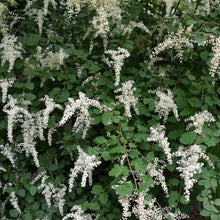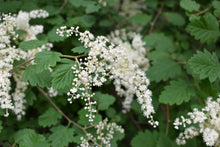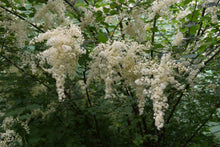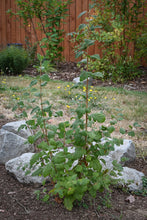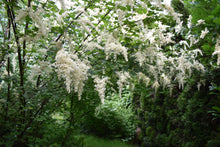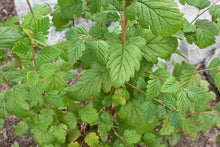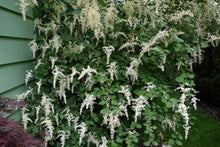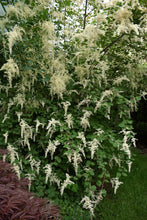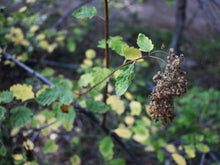
Holodiscus discolor
Oceanspray is a large, fast-growing and carefree deciduous shrub that is equally popular with gardeners, pollinators and other wildlife. It has strong upright stems that create an attractive weeping vase-shape that is easily prunable along walkways or fencelines. In the summer months, feathery plumes of lilac-like creamy white flowers cascade from the branches. The flowers are lightly fragrant and attract beneficial insects and pollinators to the garden, which in turn brings insect-eating birds. By fall, the flowers become small, hairy fruits that also feed backyard birds.
- Plant type/canopy layer: deciduous, perennial, large shrub
- Size at maturity: 10-20' tall, 8-12' wide
- Light requirements: full sun to mostly shady (intolerant of deep shade)
- Moisture requirements: moist to dry soil
- Bloom time: May - August (June - August in the Portland Metro area)
- Growth rate/ease: fast growing, very easy to grow
- Wildlife support: flowers attract and provide nectar source for hummingbirds, adult butterflies, bees and other insect pollinators; seeds are consumed by birds; overall plant attracts and supports beneficial and other pest-eating insects, is a caterpillar host plant and larval food source to native butterflies and moths including pale swallowtail, spring azure, Lorquin’s admiral, and brown elfin butterflies that all lay their eggs on it; it also provides good cover for birds, small mammals and amphibians, such as the Pacific Treefrog
- Native habitat/range: common in a variety of habitats from moist to dry open forests that are often dominated by Douglas Fir, to coastal bluffs and disturbed areas such as logged or burned areas and roadsides across western North America, but most commonly found in the mountains of the Pacific Northwest.
- Special features & uses: drought-tolerant; deer resistant; pollinator, insect and wildlife favorite; medicinal; indigenous people have referred to this shrub as “iron wood” due to the strength of its branch, which becomes stronger when put through fire and polished with horsetail. Traditionally the branches have been used as bows, arrows, spears, digging implements, fire tongs, fishing hooks, harpoons, nails, knitting needles, furniture and small utensils and hand tools; landscape uses include pollinator gardens, rock gardens, woodland gardens, habitat hedgerows and/or erosion control and bank stabilization
Gardening with Oceanspray: Oceanspray grows quickly and successfully in a wide range of conditions, though it doesn’t like deep shade. It is not picky about soil type nor soil nutrients and is drought-tolerant once established, making it ideal for drier, lowest maintenance areas of a landscape. It is naturally vase-shaped and can be further pruned-up to allow for walking paths beside it and/or planting underneath. Try it in the open areas of your woodland garden, next to a building or along a path, in a hedgerow or on slopes for erosion control. Salal and cascade Oregon grape grow well in its shade.
Photo Credits 1, 2, 3, 5, 7, 8: Nikkie West, Sparrowhawk Native Plants
Photo Credits 4, 6: Tara Lemezis, Tiny Seed Photography









